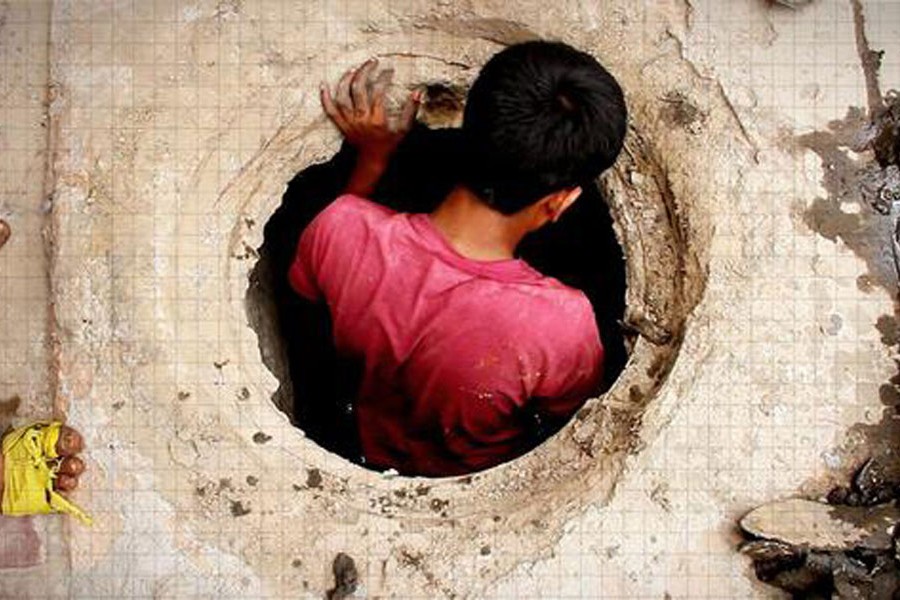Deaths of septic tank workers have regrettably become quite frequent in Bangladesh as repetitive newspaper and electronic media reports demonstrate. Septic tank workers or sanitation workers in general receive little attention about their health, safety, and well-being from any quarter of the society. They mostly work informally as individual contractors. With low literacy, health and safety awareness, and no economic means to buy and use any protective gear, these workers work at the mercy of the households or commercial establishments as they are hired to do the "dirty and dangerous" but essential job of installing, cleaning and maintaining the sanitary systems. Some of them who work for city corporations or municipalities or for-profit business entities may enjoy a little better economic and job security.
But why and how so many of these workers are dying at work while cleaning septic tanks and what can be done to save their lives? Following is a brief account of recent septic tank worker death incidents compiled by this author from newspaper sources-this list is not comprehensive by any means:
The table above provides only a snapshot of some representative and recent incidents which were reported in the national media. It can be easily assumed that the real number of the casualties is much higher as all such incidents do not get reported in news media. Also, it reports fatal incidents only, and a lot more workers must have been injured and fallen sick while doing their work. Some of them might be suffered from long-term health consequences. Both the fatal and non-fatal incidents create an enormous burden for the workers and their family members as provisions of receiving adequate and timely compensation after being injured or killed have not been developed in Bangladesh, particularly for the workers in its large informal economy. The numbers, patterns, and trends observed here make it clear that these incidents are quite prevalent in the country and they do occur across the country and are not confined only to Dhaka or a few large urban centres.


In neighbouring India, as many as 400 people died while undertaking hazardous cleaning of sewers and septic tanks between 2017 and 2022. Bangladesh does not have such data and no organization has attempted to gather or compile such reports on these workers from national sources such as police records, death certificates, newspaper reports, or hospital records.
Examining, washing, or sustaining a septic system is very hazardous by the very nature of the work, exposure to open or raw sewage, and the composition and type of materials handled. The common health hazards for these workers include communicable diseases, harmful gases, sharp objects, splashes and spills, flames, slippery surfaces, and electrical shocks. Sewage contains harmful bacteria, viruses, and parasites that result in infection and illness for anyone who gets in touch. Contact with sewage or its residues on the clothing of these workers and the equipment they use can cause illness as well. Also, decomposing human waste produces harmful gases that diminish the supply of oxygen, creating a very unsafe work environment to breathe. Methane gas is produced in the septic tank that is explosive and a high fire hazard.
Previous research and several professional organisations provide some guidance for these workers' safe work practices; all of these fall under any of the three categories: engineering interventions, education and awareness, and enforcement or regulatory measures.
Workers must try to minimise splashing, spraying, and aerosolisation of sewage during their work.
Working with a septic tank is unsafe, and tank cleaning and repairs must be done by well-trained professionals only. A worker needs to be extensively trained and must wear special equipment and gear, including a self-contained breathing apparatus when possible. Safe work practices, proper hygiene, protective clothing, and proper clean-up can help minimize exposure risks for workers and their family members. Workers should be licensed to do this work and a list of licensed workers in each locality should be prepared and kept by the City Corporation or local municipality. This list should be made widely accessible (e.g., on their website or Facebook as well).
Dr. Hasnat M Alamgir is Professor and Head of Public Health at State University of Bangladesh.


